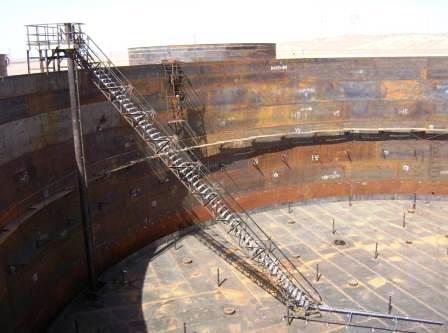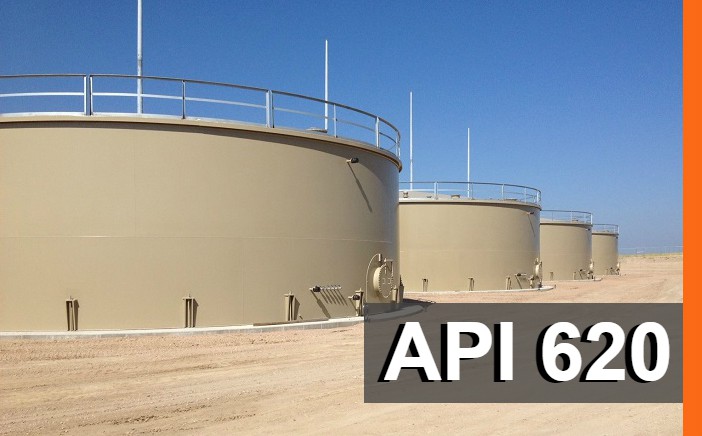How API 650 Welding Inspection Helps Prevent Structural Failures and Secures Reliability
Wiki Article
A Detailed Appearance at the Installation Process of Welding Assessment Techniques
Welding inspection is a vital procedure that assures architectural integrity and safety and security. The setup of inspection strategies entails a number of methodical steps, each indispensable to achieving dependable results. From planning and device selection to carrying out non-destructive and aesthetic examinations, each phase demands careful attention. Recognizing these procedures can greatly enhance quality control in welding projects. What difficulties arise in implementing these techniques, and just how can they be properly resolved?Comprehending the Value of Welding Inspection
Welding evaluation is a critical part of making certain structural integrity and safety in building and construction and manufacturing processes. This practice includes reviewing bonded joints for flaws, making certain that they fulfill certain requirements and laws. By systematically gauging weld high quality, inspectors can recognize problems such as splits, gaps, and incomplete blend, which can jeopardize the stamina and sturdiness of frameworks.The relevance of welding assessment extends beyond immediate security concerns; it assists stop pricey failings and potential threats in the long-term. Effective examination techniques foster conformity with industry criteria, therefore enhancing the total reliability of welded elements. In addition, a durable evaluation procedure adds to maintaining the reputation of manufacturers and contractors, as it ensures clients of the quality of their jobs. Eventually, recognizing the significance of welding inspection is important for promoting secure building techniques and making sure the longevity of crucial framework and products.
Selecting the Right Equipment for Examination
When picking the suitable devices for evaluation, it is necessary to ponder the certain needs of the welding procedure and the materials involved. Various examination methods, such as visual, ultrasonic, and radiographic testing, necessitate distinctive devices tailored to their distinct demands. For aesthetic assessments, tools like multiplying calipers and glasses are critical for assessing weld quality. Ultrasonic testing requires specialized devices efficient in transmitting and getting audio waves to identify inner defects. Radiographic screening, on the other hand, uses X-ray or gamma-ray resources along with delicate film or digital detectors to disclose incongruities.
Furthermore, personal protective equipment (PPE) is important to ensure the safety and security of assessors throughout analyses. Choosing the right devices not just enhances the precision of inspections yet additionally adds to the general stability and safety and security of the welding task. A thorough understanding of offered devices and their applications is necessary for efficient welding inspection.
Planning for the Inspection Refine
Prior to launching the examination process, it is vital to develop an extensive plan that details the extent and goals of the examination. This plan ought to consist of details criteria that specify what makes up acceptable high quality in the welding work being evaluated. Recognizing the appropriate codes and standards is essential, as they will certainly lead the inspection requirements and methodologies.In addition, personnel associated with the assessment should be appropriately educated and licensed in welding evaluation methods to assure reliability and accuracy. A list can be valuable in arranging the different aspects of the examination, varying from equipment preparedness to environmental problems that could impact the assessment.

Lastly, logistical considerations such as scheduling, offered sources, and communication between group members ought to be attended to. By preparing methodically, assessors can enhance the efficiency of the assessment and make sure that all crucial elements are duly taken into consideration prior to continuing with the inspection itself.
Performing Visual Evaluations

Conducting aesthetic evaluations is a vital action in the welding assessment procedure, calling for careful prep work to ensure efficient evaluation. Inspectors have to know with vital problem indications that can signify prospective concerns in weld quality. By concentrating on these facets, one can improve the general dependability of the examination outcomes.
Preparing for Visual Inspection
Visual assessment offers as a vital very first step in the welding inspection process, assuring that any type of possible flaws are recognized early (API 650 Welding Inspection). Appropriate preparation is vital for efficient visual evaluation. Assessors need to start by evaluating pertinent paperwork, consisting of welding treatments and specs, to recognize the task needs. They have to collect required tools, such as amplifying glasses, flashlights, and ideal personal safety tools (PPE) A detailed examination of the examination location is essential; inspectors must confirm it is complimentary and tidy of obstructions. Additionally, it is essential to establish excellent illumination conditions to boost visibility of welds. By taking these preparatory actions, examiners can create an environment conducive to identifying inconsistencies and ensuring the integrity of the welded frameworksSecret Defect Indicators
A detailed understanding of crucial defect indicators is important throughout aesthetic inspections to ensure the high quality and security of welded joints. Inspectors must concentrate on certain signs such as fractures, porosity, damages, and incomplete combination. Cracks may show up as sharp lines and can jeopardize architectural integrity. Porosity manifests as little openings that can damage weld toughness. Undercuts, which are grooves along the weld side, can result in stress and anxiety concentration. Incomplete fusion shows that the weld steel did not appropriately bond with the base product, leading to a weak joint. By methodically identifying these issues, examiners can determine conformity with industry criteria and improve the overall dependability of bonded structures, eventually adding to safer operational problems.Applying Non-Destructive Evaluating Strategies

Numerous additional reading non-destructive screening (NDT) techniques are essential to assuring the stability of bonded structures without endangering their performance. These approaches enable inspectors to examine weld quality and identify problems without triggering damage to the materials being tested. Usual NDT techniques consist of ultrasonic testing, radiographic testing, magnetic particle testing, and color penetrant testing. Each method offers a specific objective, dealing with various kinds of imperfections such as splits, porosity, or incomplete combination.
Carrying out NDT strategies needs a systematic technique, starting with choosing the proper approach based on the materials and the nature of the weld. Training personnel in these strategies is necessary for accurate outcomes. Furthermore, developing clear treatments and criteria warranties uniformity throughout the examination procedure. By integrating NDT right into the welding assessment workflow, organizations can improve the reliability of their look at these guys items while reducing possible risks connected with architectural failures. This aggressive method inevitably contributes to keeping safety and security and high quality standards in welded constructions.
Examining and documenting Evaluation Outcomes
Effective documents and analysis of examination outcomes are essential elements of the welding assessment procedure. Exact documents of examination findings function as a referral for quality control and compliance with industry requirements. API 650 Welding Inspection. Assessors should utilize structured types or electronic platforms to log details such as the kind of weld, evaluation methods employed, and any inconsistencies recognized during the analysisOnce information is gathered, comprehensive analysis is essential. This entails contrasting results versus established standards to determine trends or repeating concerns. Analytical devices might be employed to evaluate flaws and assess their effect on general weld top quality.
In addition, effective interaction of searchings for to relevant stakeholders is critical. Summaries and reports need to be succinct and clear, highlighting key understandings and suggestions for corrective actions. By systematically assessing and recording inspection results, organizations can cultivate constant renovation in welding practices and improve item honesty.
Frequently Asked Concerns
What Certifications Are Required to Become a Welding Inspector?
To end up being a welding assessor, one generally needs pertinent certifications such as AWS CWI, along with experience in welding methods, knowledge of welding codes, and efficiency in examination strategies to guarantee quality and security requirements.Just How Usually Should Welding Inspections Be Conducted?
Welding evaluations must be carried out regularly, generally after each weld is completed, and regularly throughout jobs. Aspects such as task intricacy, sector criteria, and regulatory requirements can influence the frequency of these evaluations.What Is the Expense of Welding Assessment Providers?
The price of welding assessment solutions differs significantly based on factors such as project size, complexity, and location. Typically, rates vary from $100 to $150 per hour, with added costs for specialized screening and accreditations.Exist Certifications for Welding Inspectors?
Yes, there are different accreditations for welding inspectors, consisting of those used by the American Welding Society (AWS) and the International Institute of Welding (IIW) he said These certifications assure examiners possess the essential abilities and knowledge for reliable examinations.
Exactly how Do I Choose an Assessment Provider?
To choose an examination company, one should assess credentials, experience, industry track record, and consumer reviews. Furthermore, comparing service offerings and rates can help ensure the picked service provider satisfies details project needs properly.Furthermore, employees entailed in the assessment needs to be adequately educated and accredited in welding evaluation strategies to guarantee reliability and precision. Performing visual inspections is an essential action in the welding evaluation procedure, requiring careful prep work to ensure reliable examination. Aesthetic examination offers as a vital very first step in the welding inspection process, assuring that any prospective issues are identified early. Effective documentation and analysis of assessment outcomes are necessary parts of the welding inspection process. Welding inspections need to be carried out regularly, commonly after each weld is finished, and periodically during tasks.
Report this wiki page